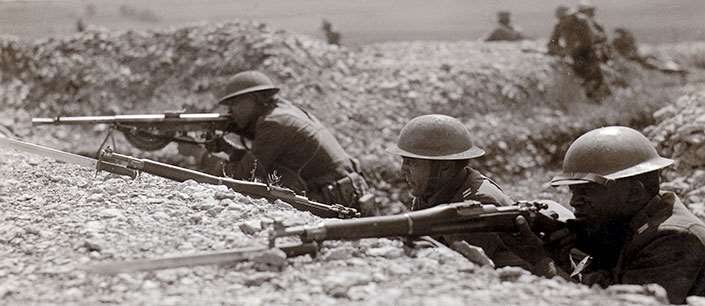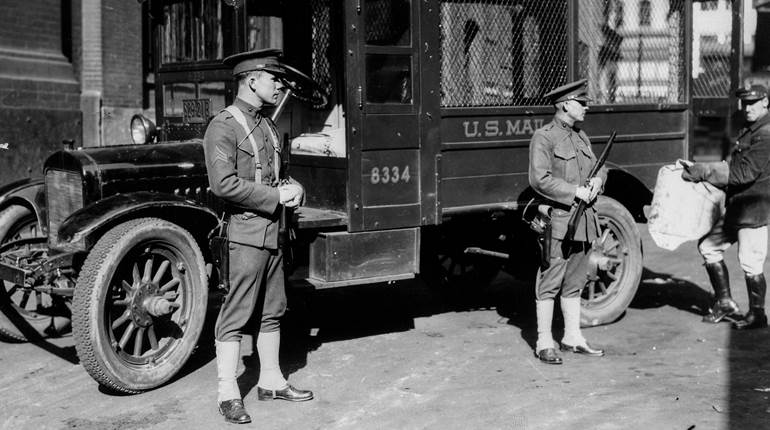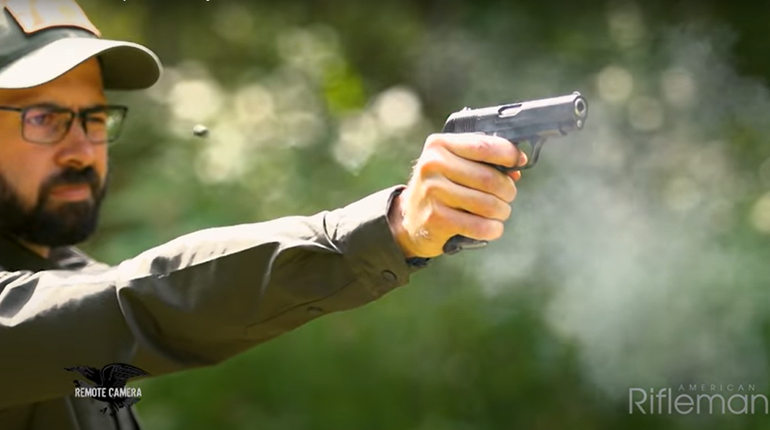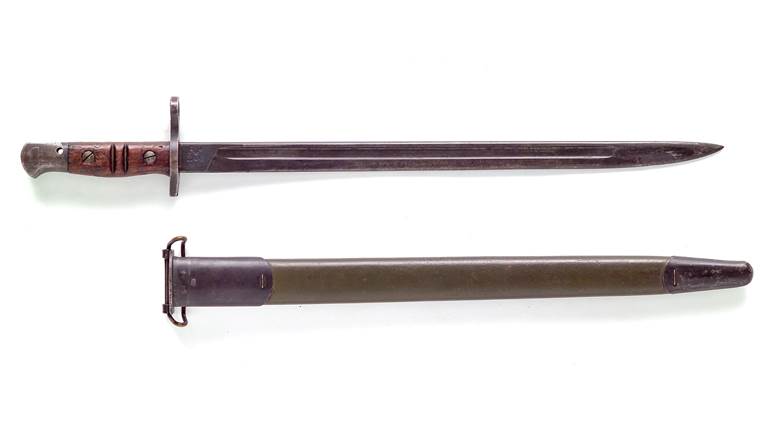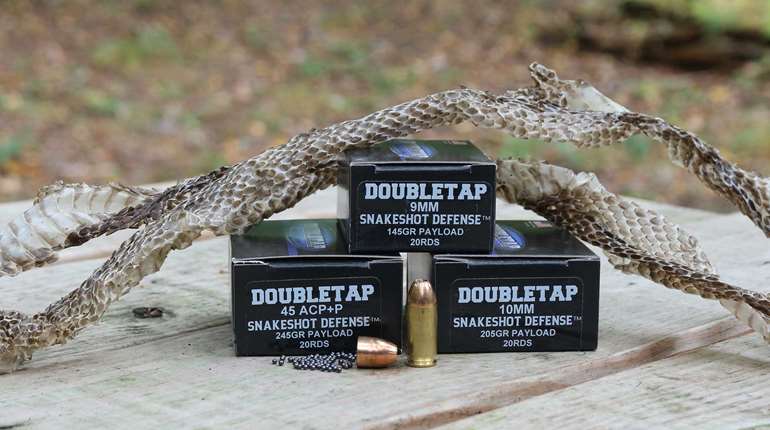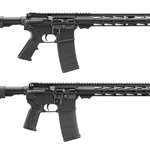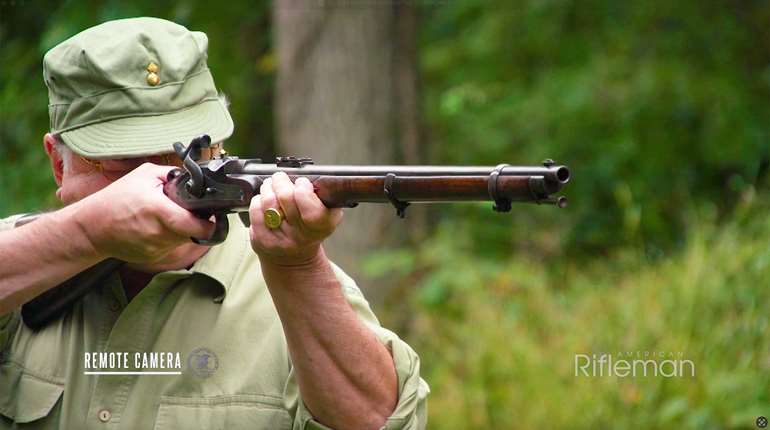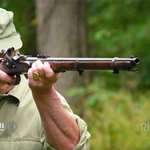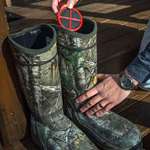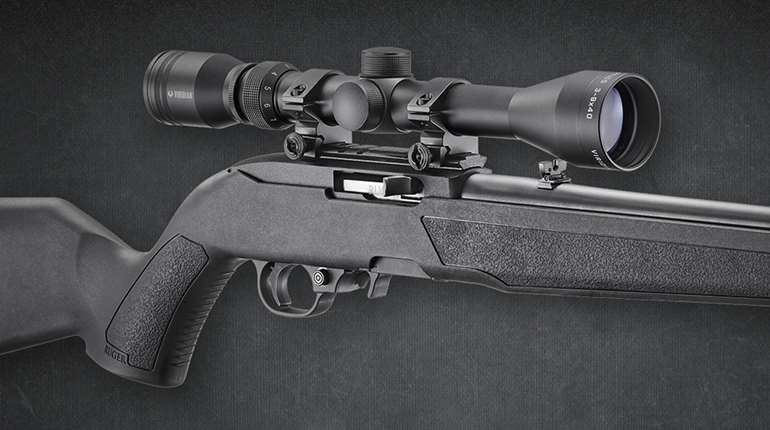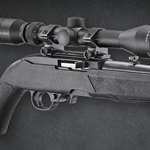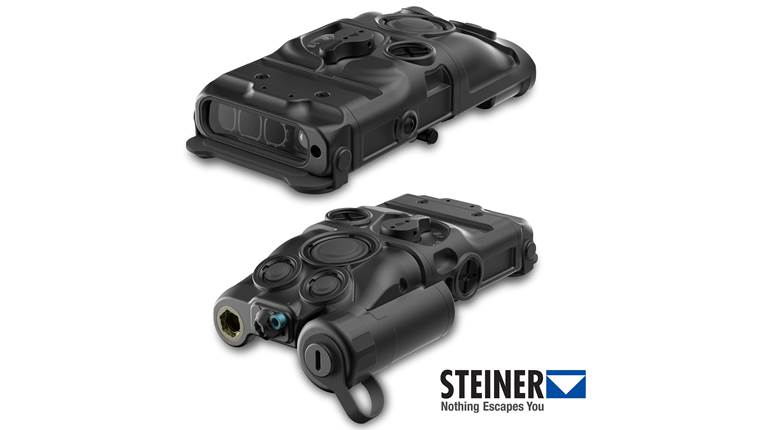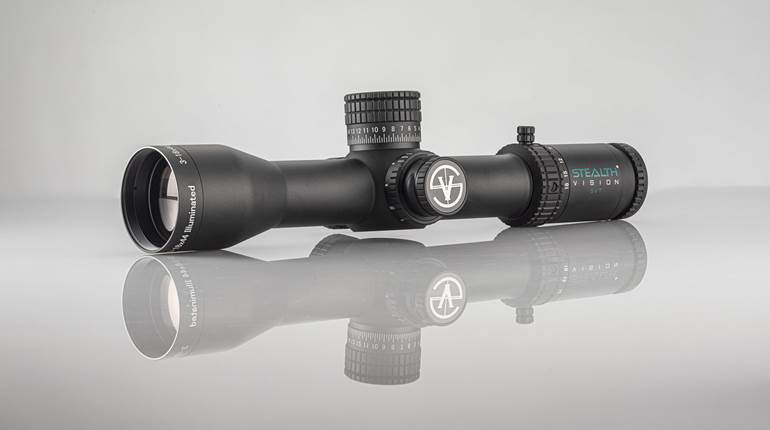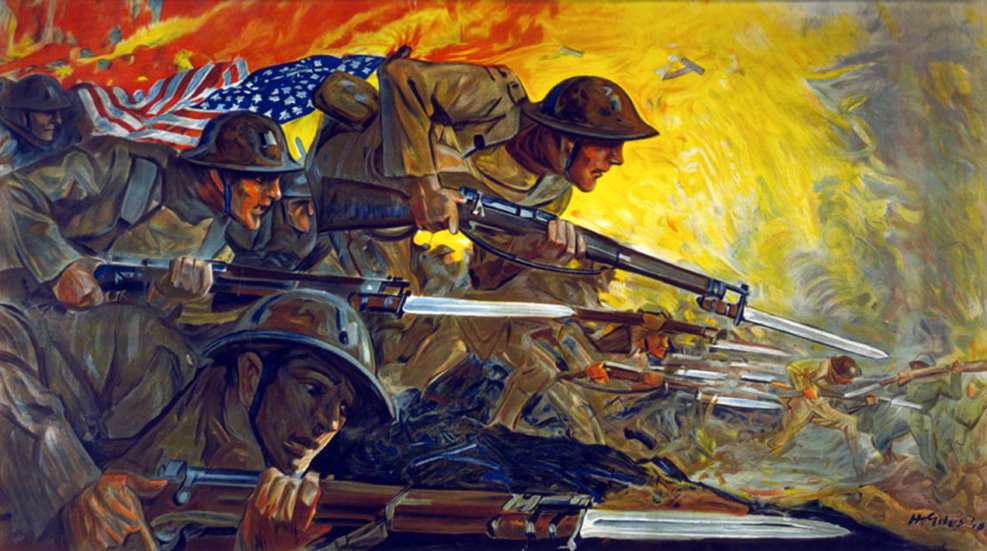
“Nothing Stops These Men, Let Nothing Stop You” by Howard Giles; courtesy of Armor Plate Press
One of the best known and most venerated U.S. military small arms is the “U.S. Magazine Rifle, Caliber .30, Model of 1903.” Subsequently known over the past 115 years as the “Springfield ’03” or simply the “’03,” the rifle has gained a well-deserved reputation for its craftsmanship, dependability and accuracy.
The excellence of the rifle was aptly stated in the following passage from the 1919 book America’s Munitions 1917-1918, authored by Assistant Secretary of War Benedict Crowell: “America, since the days of Daniel Boone a nation of crack shots, was naturally the home of good rifles. Hence, perhaps, it is not surprising that the United States should be the nation to produce the closest shooting military rifle known in its day. This was the United States rifle, model of 1903, popularly called the Springfield.”
Adopted in 1903 as a replacement for the .30-40 Krag-Jorgensen bolt-action rifle, which had shown several deficiencies during the Spanish-American War, the original Model 1903 rifle was fitted with a retractable rod bayonet and was chambered for the .30-’03 cartridge. Modifications were subsequently made in the design during 1905-1906, and included the incorporation of a more conventional knife bayonet, adopted as the “Bayonet, Model of 1905,” switching to a folding-leaf rear sight (also designated as the “Model of 1905”) as well as changing to the improved .30 Springfield (.30-’06 Sprg.) cartridge.

The Model 1903 rifle weighed approximately 8 lbs., 11 ozs., with a 24" barrel and an overall length of 43 1/2". The rifle was typically equipped with the Model 1907 leather sling.
In addition to being manufactured at Springfield Armory, the ’03 was produced at Rock Island Arsenal from 1903 to 1913 and again from 1917 to 1919. The designation, name of the manufacturer and serial number were stamped on the receiver ring, and the initials of the maker, date of production and Ordnance Dept. “flaming bomb” insignia were stamped on top of the barrel just behind the front sight.
Prior to World War I, the Springfield ’03 reigned supreme on many of the rifle ranges of the day. Amazingly, the ’03 in military configuration successfully competed against the best target rifles from other nations in the 1912 Olympics and other prestigious shooting matches. As stated in the above-referenced book: “There was no questioning the superiority of the Springfield in point of accuracy. Time after time we pitted our Army shooting teams against those of other nations of the earth and won the international competitions with the Springfield … . Much credit is to be said for the men behind the guns, but due credit must be given to the rifles that put the bullets where the marksmen aimed … .”
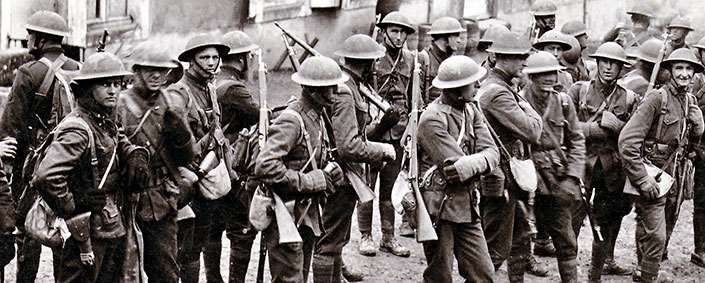
By late 1913, appropriations for military expenditures were severely reduced, which resulted in Rock Island Arsenal ceasing manufacture of the ’03, and Springfield scaling back its production line. Since the small pre-war U.S. Army, Navy and Marine Corps were more or less fully equipped with Model 1903 rifles by this time, the reduced production rate was not seen as a problem. That would change just a few years later.
When America entered the Great War in April 1917, our nation was armed with arguably the finest bolt-action military rifle of all time. The only problem with the Springfield rifle was that there weren’t nearly enough on hand to equip the rapidly mobilizing armed forces. In early 1917, Rock Island Arsenal was directed to resume manufacture—easier said than done. The assembly line had been shut down for three years, and most of the skilled workers had long since departed. Rock Island also experienced some problems in recruiting and training a new workforce. To exacerbate the difficulties, there were troublesome shortages of raw materials, chiefly suitable steel, since many other arms manufacturers were also gearing up to make various types of firearms. Since Springfield Armory still had a cadre of experienced workmen, the facility did not experience as many problems as Rock Island during this period, but there were still shortages of materials, which had some impact on the production rate.
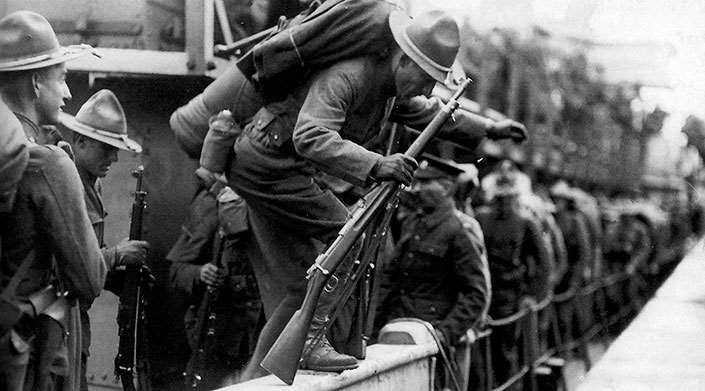
In order to speed manufacture, some components were slightly modified to reduce machining time, including elimination of the serrations on the trigger and checkering on the buttplate. None of these changes had any negative effects on the utility of the rifles, and there was no discernible reduction in the quality of either workmanship or materials of the Springfield and Rock Island ’03 rifles made in the 1917-1918 period from those made previously. In late 1918, the heat-treatment procedure for the receivers and barrels was changed from the old case-hardened variety to a stronger, double-heat-treated type. Another change made in late 1918 was the use of the more durable Parkerized finish to replace the attractive, but labor-intensive, bluing that was previously used for many of the rifle’s metal components. However, few, if any, of the factory Parkerized rifles made it overseas before the Armistice.
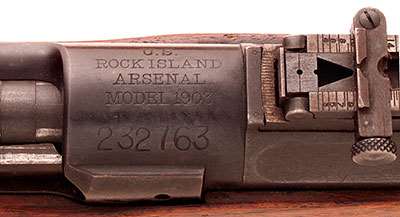
When the first contingent of Doughboys arrived in France, they brought along their trusty pre-1917 production ’03s. Ordnance records indicate that about 30,000 Model 1903 rifles were also assembled in France from spare parts. As soon as the newly arrived American troops were deployed to the front lines, their Springfields were put to good use.
There are many accounts of the effectiveness of the ’03 during the war. One was related in John Harllee’s The Marine From Manatee: “Even in the matter of defeating machine gun nests, two U.S. Army General Staff officers who had been in the thick of the fighting reported the value of accurate rifle fire. They said that in some cases American riflemen had been able to get on one or more flanks or to the rear of machine gun nests at some distance and had been able to fire their Springfields with such accuracy that the machine gunners were often shot through the head or vital part of the body.”
World War I combat veteran, 1st Lt. Samuel W. Meek of the 6th Marines, 2nd Division, had the following comment regarding the rifle: “Let me say something right now about the Springfield. It was a great weapon. Not only was it accurate, but it rarely jammed … it seemed to absorb the dirt and still work … and dirt was something we were always living in.”
There was no question as to the excellence of the ’03, but even with Springfield Armory and Rock Island Arsenal working at maximum capacity, it was forecast that there would soon be a shortage of service rifles given the ever-increasing demand. In order to secure the required additional rifles, the Ordnance Dept. had two basic options available: seek additional manufacturing sources for the Model 1903 rifle or adopt a second type of service rifle to augment the Springfield.
It was soon determined that having commercial firms gear up to manufacture the ’03 from scratch would result in an unacceptable time delay, so the second alternative was selected. Three American firms—Remington, Winchester and Eddystone—had just completed production for the British government of large numbers of the Pattern 1914 rifle chambered for the .303 British cartridge. It was decided that the British rifle could be modified without a great deal of difficulty for the American .30-’06 cartridge. The timing was good for the American government since the workforces and production lines of the three manufacturers were still largely intact. The modified British rifle was adopted by the Army as the “Model of 1917,” and large numbers were made during the war. While a serviceable weapon, the 1917 rifle was heavier and bulkier than the trim Springfield. Even though an estimated three-quarters of the American Expeditionary Force (AEF) was armed with Model 1917 rifles by the time of the Armistice, the ’03 remained the overwhelming choice of our Doughboys.
In addition to its reliability and superb accuracy, another attribute of the Springfield that is often overlooked today was its versatility, as it was utilized in ways never envisioned when the gun was adopted some 15 years earlier. These included various sniper-rifle variants, including those fitted with Warner & Swasey telescopic sights, as well as some with Winchester A5 scopes.

The telescopic-sighted sniper rifles were not the only variants of the ’03 rifle fielded during World War I. During the war, the rifle grenade proved to be very valuable in trench warfare. A grenade launcher, the Vivien-Bessières, copied by the Americans from a French design, was produced and used in surprisingly large numbers with the ’03 rifle by our troops during the war. An extremely interesting variation developed in World War I was the so-called “Pedersen Device,” which was an ingenious mechanism designed by John D. Pedersen that converted the bolt-action M1903 rifle into a semi-automatic firing a small .30-cal. cartridge similar to the Colt .32 ACP pistol cartridge. The conversion from the standard bolt-action rifle firing the powerful .30-’06 Sprg. cartridge to a semi-automatic was by the simple expedient of removing the bolt and inserting the device. Springfield Armory made a slightly modified Model 1903 rifle, called the Mark I, for use with the Pedersen Device. As events transpired, the Armistice came about before any of the Pedersen Devices could be fielded, and production was halted after some 65,000 had been made. Post-war evaluation revealed that the device was not suitable for the Army’s present or future needs, and, in 1931, they were ordered to be destroyed. Very few survived, and they are rare and valuable collectibles today. The Mark I Model 1903 rifles remained in service, although most had the special Mark I parts removed and replaced with standard components.
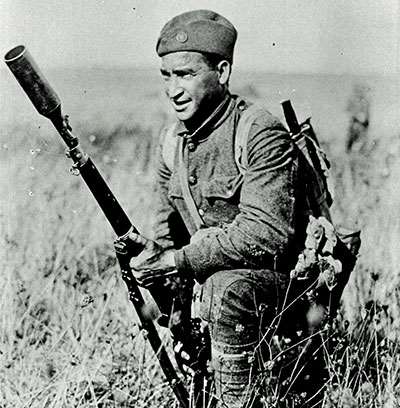
A fascinating adaptation of the ’03 rifle produced during World War I were several types of experimental “trench periscope” rifles, the most well-known being the so-called Cameron-Yaggi “periscope rifle,” developed by James L. Cameron and Lawrence E. Yaggi. Their concept was to mount a standard M1903 rifle into a metal framework that was rested on the shooter’s shoulder and held above the head in order to fire over the top of a trench. The bolt and trigger were manipulated by extension levers, and sighting was by means of a periscopic sight. A 25-round extension magazine was fitted so that the rifle could be fired for an extended period without having to remove it from the shoulder for reloading. It, and similar, mechanisms were tested by the Ordnance Dept., but none was selected for adoption, and only a few prototype examples were made. The end of World War I resulted in little perceived need for special trench warfare devices, and further development ceased. Surviving examples of the trench periscope rifles are quite rare.
Still another modification to the Model 1903 rifle during World War I was the “Air Service” Rifle. This was a standard ’03 service rifle with a shortened stock and handguard, modified rear sight and the same type of 25-round extension magazine as used with the Cameron-Yaggi trench periscope rifle. It was described in a 1918 Ordnance Dept. report as “Stripped for Air Service.” While the existence of the Air Service ’03 rifles has been well established, the intended use for which it was designed remains the subject of some conjecture even today. It was not intended for infantry use, and other theories have been postulated including those that it was intended as armament for aircraft observers and for defense in observation balloons. The most logical application for the modified ’03 was use by a pilot who might be forced down behind enemy lines and need an arm more effective than a pistol with which to defend himself. Just over 900 Air Service rifles were made, but none is believed to have been issued. After the war, virtually all were either destroyed or converted to standard service-rifle configuration.

After the Armistice that ended World War I was declared in November 1918, the War Dept. had a decision to make regarding the future use of the ’03 rifle. Even though it was still the standardized U.S. military service rifle, there were greater numbers of Model 1917 U.S. Enfield rifles on hand. The Model 1917 had proven to be serviceable and reliable during the war. There were many, in and out of the military establishment, who were in favor of making the American Enfield the standard service rifle and relegating the ’03 to the war-reserve stockpile. However, the performance of the ’03 during the war, especially its superb accuracy, resulted in the decision to retain the Springfield as the standardized American service rifle and put the Model 1917s in mothballs.
Indeed, of all the ’03’s virtues, its unparalleled accuracy was its most impressive attribute. It has been said about the three major rifles fielded in World War I that the Germans brought a hunting rifle, the British brought a battle rifle and the Americans brought a target rifle.
The Great War ended with the ’03 rifle’s legacy as a superb military arm firmly intact. The Springfield remained a mainstay of the U.S. military during the post-World War I era.
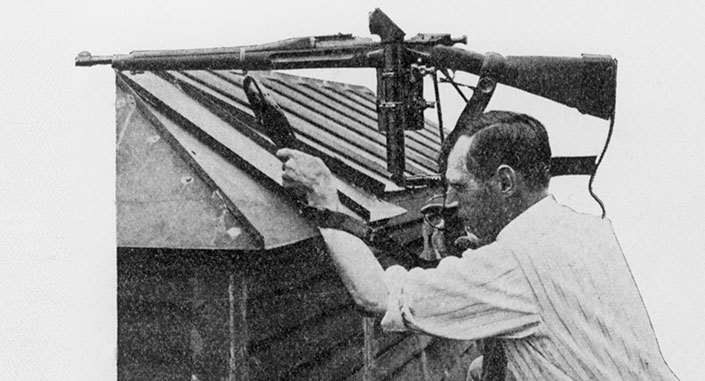
Even though the M1 Garand rifle was adopted in 1938, production of the new semi-automatic rifle was limited for the first few years, and the Springfield remained the predominant American service rifle at the beginning of World War II. The early Pacific campaigns of World War II were fought primarily with ’03s, and it was not until 1943 that the U.S. military was more or less fully equipped with M1 rifles. Even so, the ’03 remained in use as a supplemental service rifle, a sniper rifle and a rifle-grenade-launching platform throughout the war.
Despite its subsequent use after 1918, the Model 1903 rifle will always be inexorably linked with the Doughboys of the First World War. Even though by the end of the war, most Doughboys were issued Model 1917 rifles, rather than ’03s, the Springfield was the preferred rifle in the eyes of a majority of the AEF. This feeling was aptly summed up by Cpl. Mike Shelton: “What we really wanted were Springfields. They were the best rifles in the war.” Such is the legacy of the ’03 Springfield during World War I.
